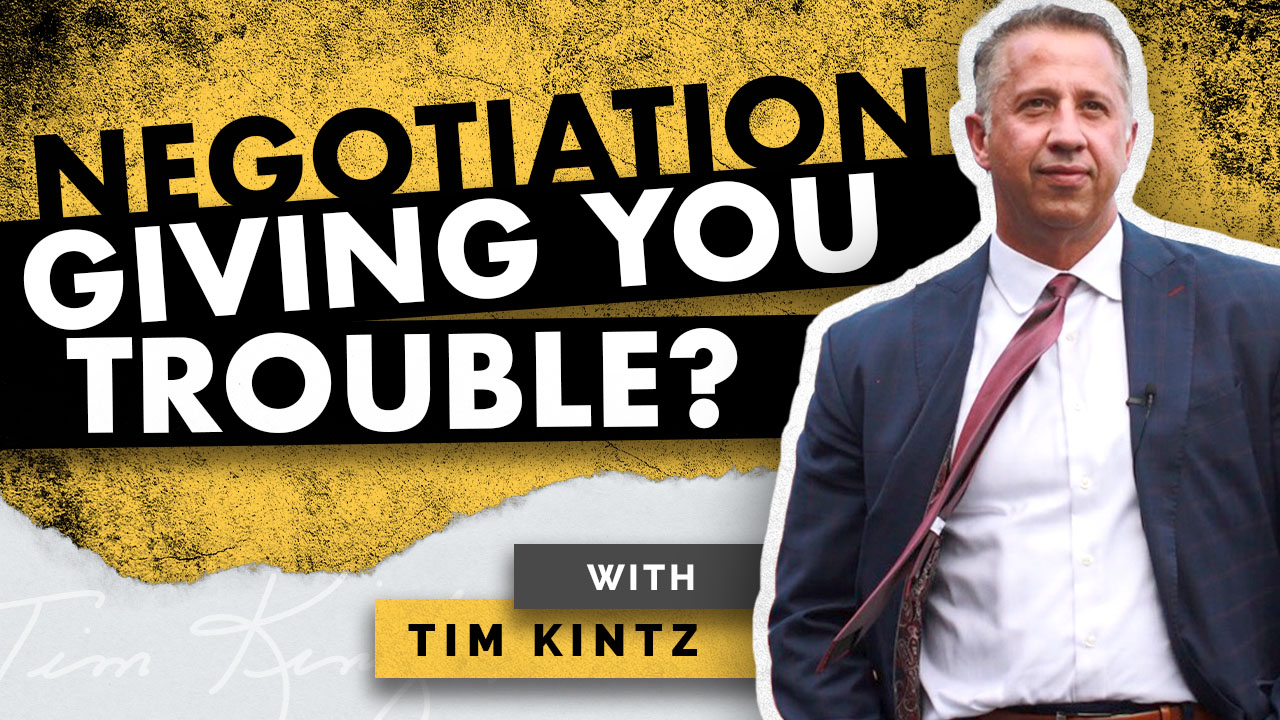These five car sales negotiation strategies can be used with any car customer and will help you navigate a win/win deal with your customers so everyone walks away from the lot satisfied with the deal.
Throughout my career as a car salesperson and sales coach, I’d often tell my students, “The number one rule of negotiation is…”
By the end of the event there would be five or six number one rules written up on the whiteboard. The following is adapted from Frictionless:
Rule #1: Negotiating Is Optional
Sticker’s quicker, as the old saying goes. If you go into every sale thinking that you have to negotiate, you’ll never hold maximum gross profit. While many of your deals will turn into second- and third-pencil negotiations, it doesn’t mean every one has to.
There are a lot of things that we buy without negotiating. Why can’t car sales be the same?
When we approach the end of a deal so excited for the customer and the value that we’ve built for them, it changes our mindset. We’re thinking about how much we’ve connected with them and how much they love their car, and asking for sticker price feels like a steal compared to what the car means to them.
No one hopes they miss the putt once before sinking it, or hopes they brick the free throw. If you do, you’ll definitely miss. So don’t hope or expect that the deal will take multiple pencils. Hope for the sticker price. Hope that they agree to the first pencil and the negotiation won’t be necessary.
You might only ever find a couple of people who will pay sticker, but that doesn’t matter. Believe that you have a great product, that it’s fairly priced, and that you can show people how they can’t afford to pass it up. The value far exceeds the price, so there’s no reason to believe negotiating will be necessary.
Rule #2: Negotiating With Confidence
Stop being afraid to perform a negotiation. Turn that fear into fun. JFK said it this way: “Let us never negotiate out of fear, but never fear to negotiate.”
Putting these car sales negotiation strategies into use is about knowing what you want, going after it, and respecting the customer in the process. The whole point is to get to a win/win outcome, which means you need to look out for yourself while being willing to give a little in order to satisfy both parties. It’s building a relationship rather than burning bridges.
When you have kept the customer top of mind through the whole process, by now they’re starting to trust you. This is where it can all pay off, not just for them but for you as well. If you’ve helped them see themselves in that vehicle, now it’s time to help fit it into their budget. With all of your closes and tools ready and internalized, you’re able to ease their mind and find solutions for whatever problem brought them to the lot that day.
Rule #3: Customer-Focused Approach
Technically, this is “whoever appears to care least.” The customer needs to want to get the car more than it seems like we want to sell it. The customer needs to want that car so badly that they’ll do whatever it takes to make that happen—that emotion is what will make them more flexible throughout the negotiation.
When you begin to implement these car sales negotiation strategies, you’ll have learned about the customer’s wants, needs, compelling reasons, challenges, and desires, and then given them a solution for each of those concerns in the perfect vehicle for them. You’ve painted that vehicle into their life so well that they can’t imagine any other vehicle helping them more than this one. You’ve got them licking the paint off the car, so to speak…and none of it should appear to matter to you personally.
Convey so much confidence in the deal with your tone and body language that it looks like you’re willing to get up and walk away. You’re not begging. You’re negotiating. There should absolutely be a difference.
Rule #4: Whoever Starts the Negotiation Has the Advantage
Anytime we start talking numbers, the sales negotiation has begun. When we find out how much they’re “looking to spend,” what their credit looks like, what kind of down they have, what they owe—all of that is related to the negotiation. Usually, because our sales process made that the focus and we’ve conditioned the customers to bring these things up early on.
In these cases, either they’re starting the negotiation and will have the advantage, or we’re initiating the price conversation way too early and will give our advantage away.
As the old saying goes, the biggest bump you’ll ever get is the one you never hear. If we ask the customer where they want to be and find out it’ll be $300 a month with zero down, the first pencil being $6,700 down and $876 a month will look like a Grand Canyon–sized gap.
But if we never find out those numbers at all, then the first pencil will pull out their top numbers instead of the unrealistic numbers we often get. By being the first person to throw out numbers, we cover a ton of ground from the very beginning without having to pull them there.
Rule #5: Build in Removable Objections
This step is simple but effective: put things into the negotiation that you can afford to take out. From the very first pencil, give yourself plenty of room to adapt. For example, that $6,700 down at forty-eight months is not there to get the customer real or peel them off the ceiling. Those are all removable objections that will shape the rest of the negotiation.
When we drop from $6,700 to $5,000, then finally settle on $2,500, how does the customer feel about that transaction? They feel like they’ve won. For some of them, getting multiple wins matters even more than the size of the wins themselves. It’s the victory that makes the difference.
Think about it this way: if you were to go into a casino and the house offered you $50,000 to gamble with, would you use that or your own cash? It’s the same thing here. As salespeople, we should be negotiating with the customer’s money. Pull the concessions from the down and payments, but hang on to the price and trade as long as possible. Every time you discount the car or give more for the trade, you’re giving your own money away.
Stick to the Golden Rules
Remember that each of these rules is meant to create a repeatable process. Follow the steps over and over, regardless of the outcome. Football coaches don’t motivate their players in their pregame speech by saying, “We’re going to win 28–14 today; now get out there and kick their ass!” That wouldn’t do a thing. Instead, they make sure the first seven plays are scripted out, remind everyone to do their job on each play, and execute every step as planned. When that happens, the touchdowns take care of themselves.
Follow the Golden Rules, stick to these car sales negotiation strategies, keep the buyer at the center of the deal, and like touchdowns, the wins will follow
For more advice on succeeding in car sales, you can find Frictionless on Amazon. You can also check out our YouTube channel for more tips!
Tim Kintz is the president of The Kintz Group, the automotive industry’s premier sales and management training company. Tim started The Kintz Group after re-entering the retail side of the business as a general manager and seeing the need for up-to-date training. A graduate of the NADA Dealer Academy, Tim has worked in just about every position in the dealership and can still be found on the showroom floor working deals alongside salespeople and managers. Tim has delivered hands-on coaching, workshops, and presentations in large cities and rural communities alike. His strategies are relevant and proven to work everywhere cars are sold.













